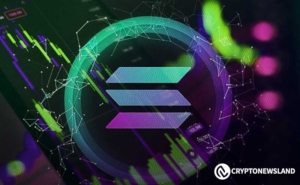Demand drivers & valuations: examining BTC, ETH & TRON/TRX
Earlier this year, I listed the various demand drivers of ETH, and opined on how important each were. For me, the most significant demand driver for crypto asset is what “long-term reserve-asset”. Basically, belief in an asset as an alternative store-of-value. Combined with economic collateral and related “money” aspects, which may be collectively categorised as “monetary premium”, I believe this is at least 90% of the value of a crypto asset. Conversely, in the post above, I had rated L1 transaction fee burns, which is responsible for all of the ultrasoundmoney and deflation type memes as a 3 - effectively being very unimportant and overrated. We can look at three of the top 10 cryptoassets to see why this is true.
BTC is still the dominant asset in the space, and has been for 14 years now. For fast moving emerging tech, this is an absolute eon, and at a $572 billion valuation, BTC the asset is entering its maturity phase. Now, some will argue that BTC will be worth $1 quadrillion or it’s “still so so early” - this is clearly not the case, BTC has been experiencing significantly diminishing returns since 2017. We can see this with all hopium projections like S2F having already failed. But I digress.
Very little activity is happening on the Bitcoin network and wider community, but very little needs to. All BTC needs to be valuable is a collective belief that it’s the best “long-term reserve asset” or alternative store-of-value. That’s it. That it still dominates the industry based on this one and only demand driver is testament for why I ranked “long-term reserve-asset” at the very top with a 10 rating.
Today, BTC is worth 2.5x ETH. For the flippening to happen, we need a majority of the crypto wealth to believe it’s the better long-term reserve asset. That’s it. No amount of activity, applications, innovation, users and adoption will make ETH more valuable than BTC. It’s simply the belief that it’s the better crypto money. Of course, ETH’s monetary premium has been growing in stature, and to understand why we have to look at Tron/TRX.
I have written about Tron recently , about how thanks to USDT it is one of the most economically active blockchains. It also has the second most high fees collected and burned, after only Ethereum L1. On average, the Tron network burns >25% as much as Ethereum, in USD terms. Yet, its market cap illustrates why monetary premium is so important - $TRON has a market cap of only 3% relative to ETH. Tron is rather unfancied by the general crypto industry, and has failed to attain a cult-like status and related premium as the coins above it - SOL, ADA, DOGE and XRP.
If the crypto market valued these coins by fee burns and activity, $TRX would have a ~10x higher market cap. But it does not, so TRON ends up with a deflation rate that’s 10x higher than ETH. Another way to look at this would be ETH would be worth $200 or something if it had the socioeconomic adoption of Tron, and all that mattered was activity on Ethereum its L2s. Clearly, ETH gains most of its value from the other demand drivers. For BTC, it’s almost entirely derived from alternative/speculative store-of-value.
At the same time, it’s important to note that while fee burns aren’t the most significant demand driver, they are still something. This is why despite being unfancied and as mentioned above lacking a cult status and narrative, $TRX has actually been one of the best performing alt-L1 tokens this bear market, only outperformed by $BTC and $ETH. (Correction: it has actually outperformed both BTC and ETH since Nov 2021.) Indeed, it has outperformed some of its peers like SOL, DOGE or ADA by over 10x. We can also see $ETH performing way better this bear market versus BTC for similar reasons.
Looking at BTC, ETH TRON in tandem reveals some truths about how the crypto market perceives these assets and how they are valued:
-
Belief in a long-term reserve asset, as an alternative store-of-value, remains the deciding factor in a crypto asset’s valuation. This belief can come from various different ways, it doesn’t matter how irrational you may perceive it.
-
Protocol revenues burns have an impact around the edges, but they are at least 10x less valuable, than the monetary stuff.
-
For an asset which derives most of its value from the monetary basket, the goal should be to drive down protocol fees as far as possible, and if possible subsidizing it, if it can be used to expand the established demand drivers in the monetary categories. For Ethereum, for example, this means making L2 fees as close to zero as possible, and in the long term, L1 fees as well. Collapsing L2 fees can be achieved in the near-term with EIP-4844 and in the mid-term with danksharding; and L1 fees in the mid-to-long-term with tech like statelessness and zkEVM. We should encourage lower fee burns and deemphasize deflation memes like ultrasoundmoney, and instead look to expand ETH’s usage as money across the industry. A $5K ETH with 1% inflation is more valuable than a $2K ETH with -0.2% inflation. Not my first rant about this :)
-
However, if a protocol’s asset does not enjoy significant monetary premium, it cannot afford to subsidize protocol usage and fee revenues, and it should first focus on being economically sustainable.
-
So, in the end, you can have two broad demand drivers for a crypto asset: monetary revenues. If one is targeting the monetary basket, deprioritize protocol revenues. Conversely, if it’s not targeting monetary, then revenues will be critical for sustainability.
-
A cryptoasset does not need to be one or the other. It’s clear something like BTC is heavily biased towards monetary premium, something like TRON is heavily biased towards revenues, while ETH is somewhere in the middle. You can also have L2 and dapp tokens that combine these - it does not have to be an L1 token-only thing. Indeed, $WLD is an example (just citing an example, it has atrocious tokenomics) that strives to be mostly about money, while mostly running on its L2.
PS: I got my data from Token Terminal , Coinmetrics and Tronscan . I have cross-checked and believe them to be accurate - most people express disbelief at Tron’s staggering revenues, but they are real.
Disclaimer: The content of this article solely reflects the author's opinion and does not represent the platform in any capacity. This article is not intended to serve as a reference for making investment decisions.
You may also like
Clanker team earns $13 million in revenue from over 200,000 tokens on Base in just five months

US equities slide as trade war escalates, Powell signals no rate cut
Tariff and interest rate concerns overshadowed a positive March jobs report
Sei Investments increases 39% stake in MicroStrategy

Fidelity Spot Solana ETF Gains Traction As SEC Acknowledges Filing

